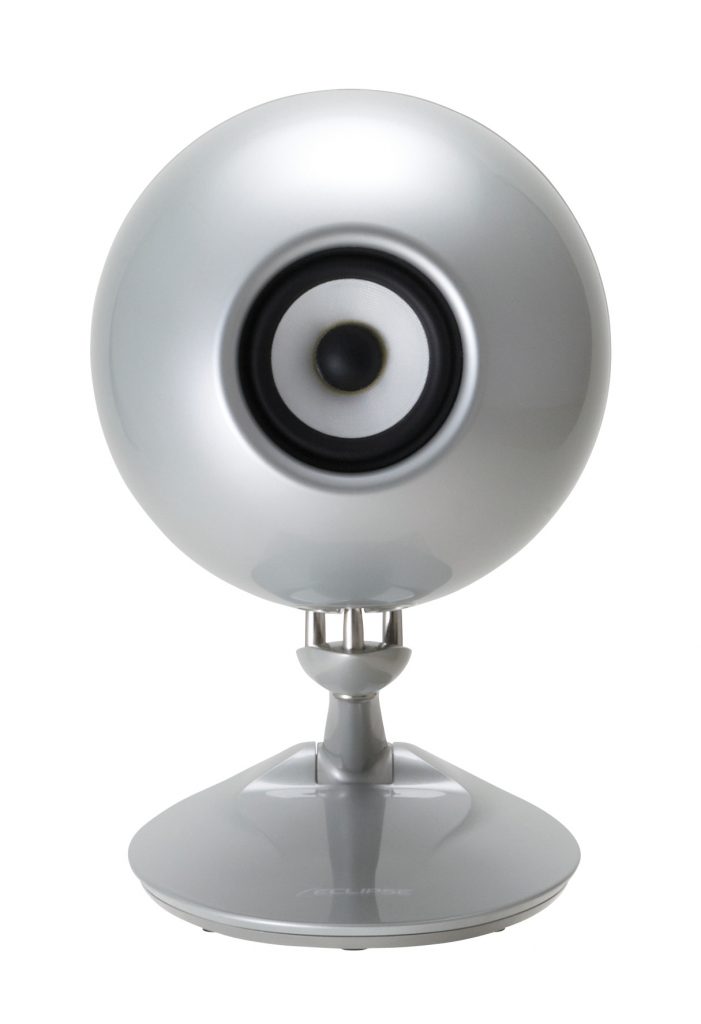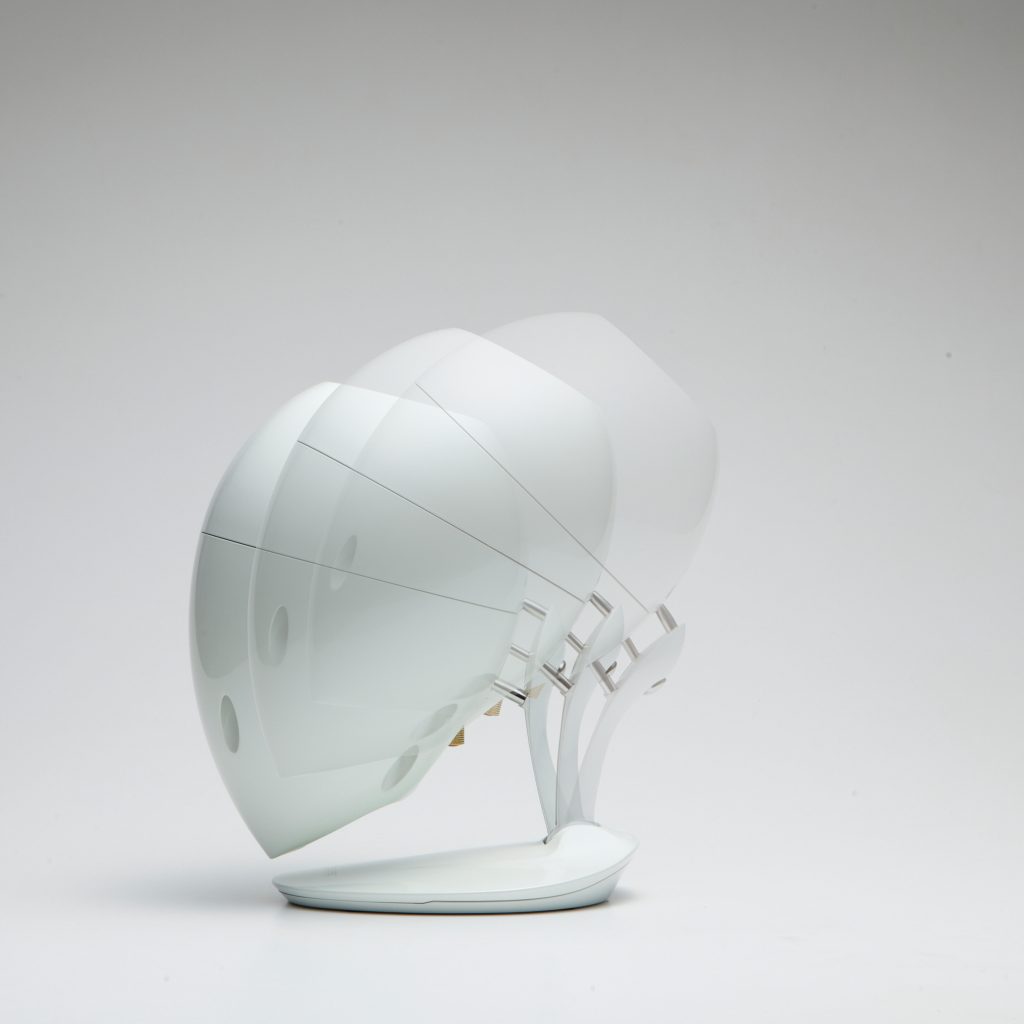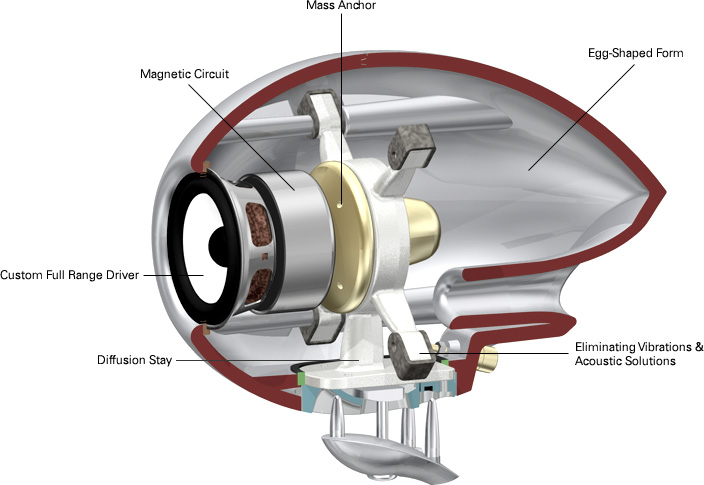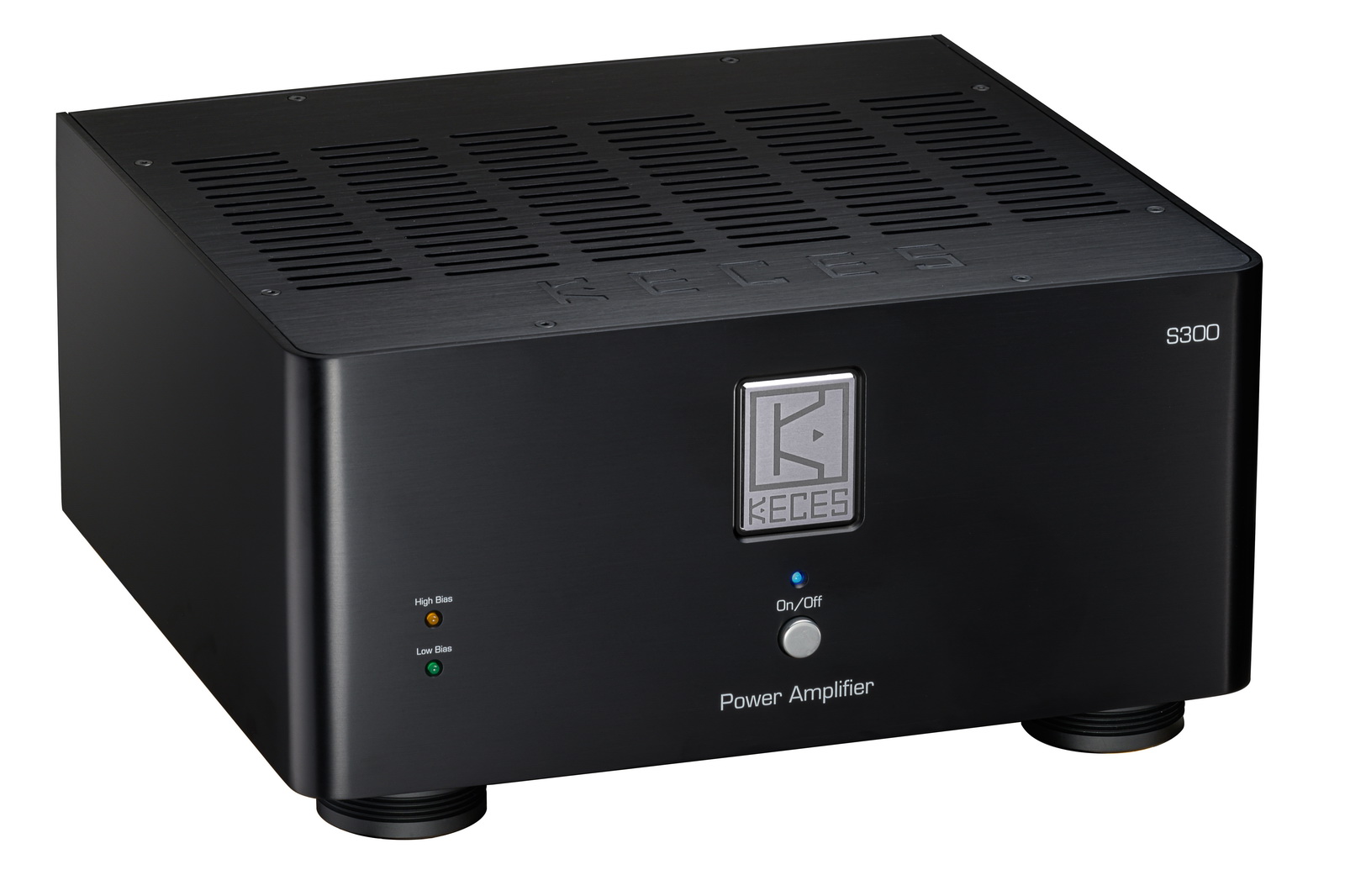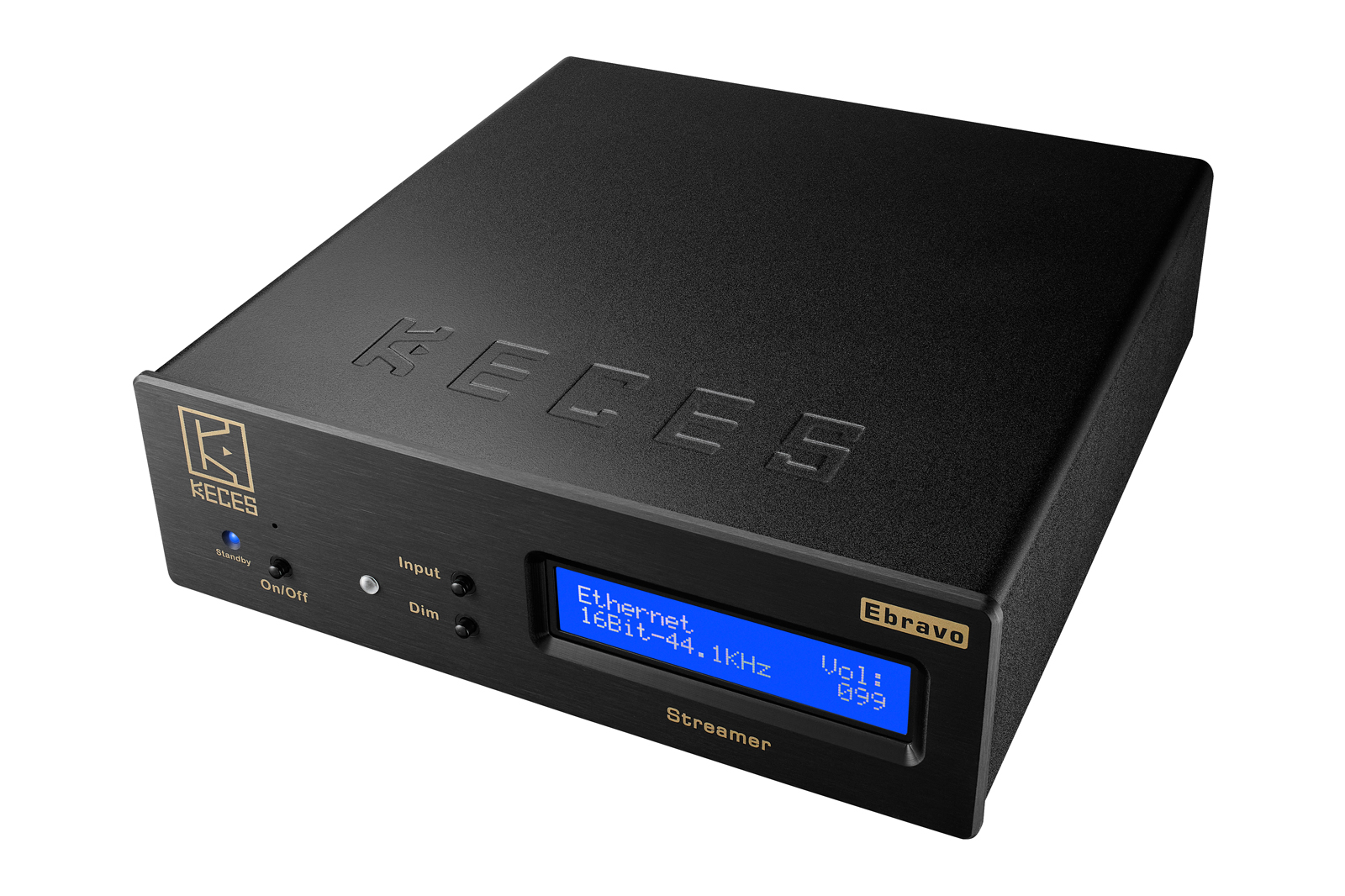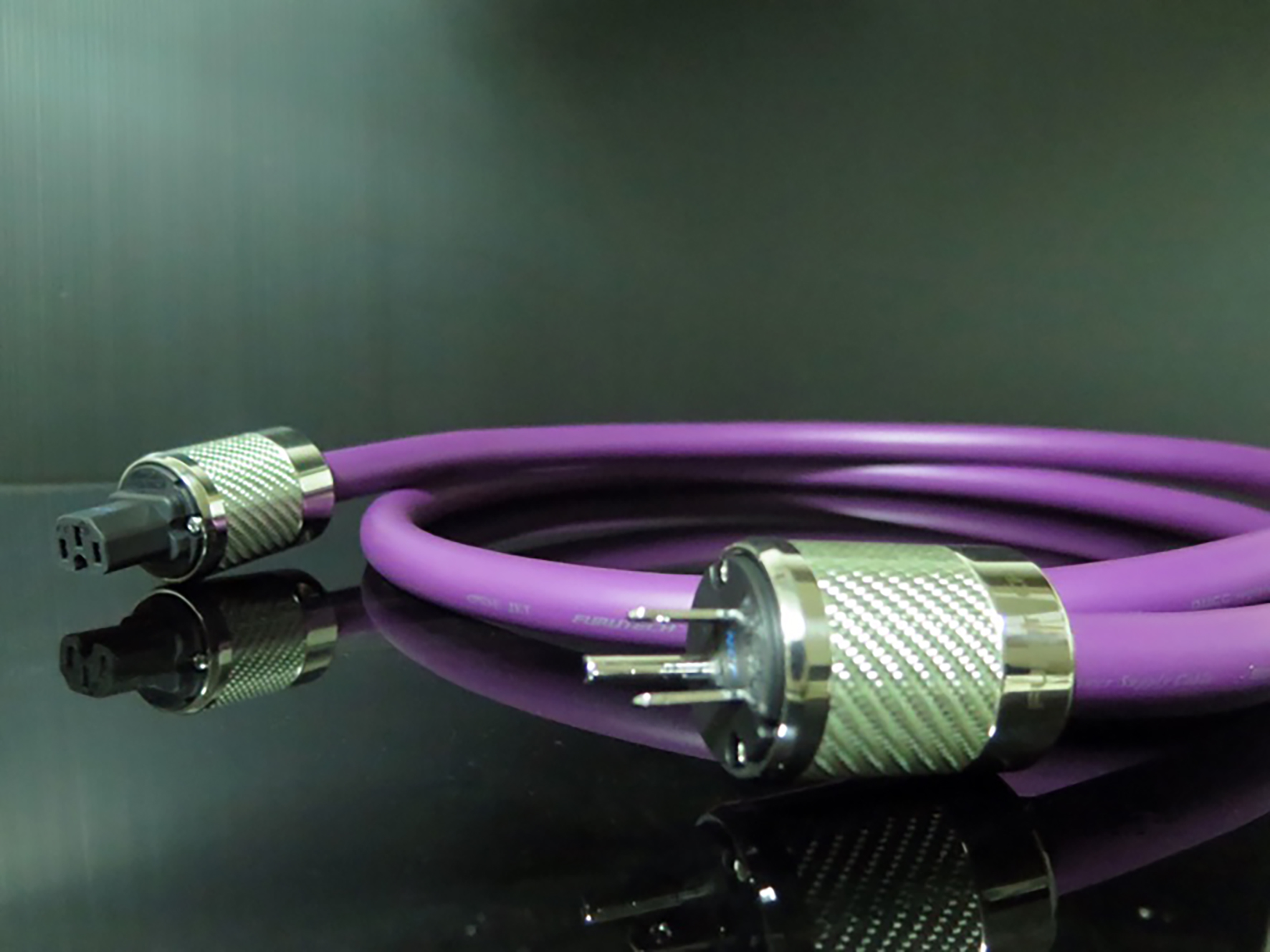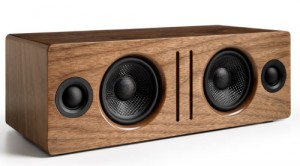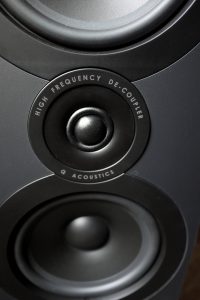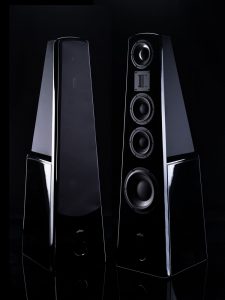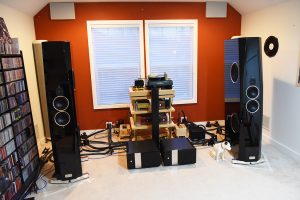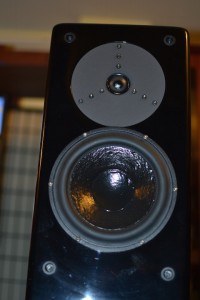Standing behind him, Michaelis saw with a shock that he was looking at the eyes of Doctor T. J. Eckleburg, which had just emerged, pale and enormous, from the dissolving night.
"God sees everything," repeated Wilson.
"That's an advertisement," Michaelis assured him - Fitzgerald's The Great Gatsby
They look like eyeballs to me. At first, they reminded me of the frolicking Pixar desk lamp. But then my mind shifted, and they became a lively pair of big, black eyeballs, just waiting to bug out, Tex Avery style. I anthropomorphize everything, which is how my mind "works" (if you could call it that). The Eclipse TD508 Mk3 loudspeakers are too cool to remain speakers in my imagination. Given the manufacturer's obvious attention to styling, I wondered if the Eclipses would be akin to those brightly colored Polyurethane portable party pal speakers on display everywhere. You know the type, they're the wireless wonders that your friends pull of their travel bag, beaming about the "high end" sound that can be had for $249. plus shipping. But don't let the Eclipses's chic appearance give you the wrong impression. The Eclipses catch your eye, to be sure, but after that, it's all about the music.
The TD508 Mk3's (made in Japan despite a name right out of Bowie's Berlin period) are all-business, innovative products, offering a raft of technical features inside their egg shaped enclosures. For example, the full range speaker's performance benefits from exactingly detailed design to ensure speaker movement that will produce speed, precision, and subtlety in equal measure. The floating mechanism that enables the speaker to pivot has been carefully engineered to avoid any residual vibration. According to the manufacturer, the striking shape is equally important to its sound: "Adoption of egg-shaped rounded form that is rigid and has no duplication of identical surface radius, instead of a square-shaped box form, which is one of the causes of sound waveform disturbance. This form controls internal standing waves and gives a diffraction effect along the edge of speaker front panel, enabling more accurate reproduction of a sound waveform."
Whew! That's a mouthful!
In brief, then, Eclipse believes that the shape of the TD508 Mk3, along with the carefully sourced materials used to construct the speaker and housing, combine to produce an exemplary sonic waveform. This waveform of music is liberated from the enclosure and reaches the listener with all of the "loudness difference and time difference" of the sound source when it was recorded. As opposed to frequency response, Eclipse argues for speakers that accurately communicate the rise and fall of sound as it occurs in a recording.
Eclipse TD508MK3: The latest upgraded MK3 version of Eclipse's medium sized Time Domain Loudspeaker. Can be desk, shelf, wall and ceiling mounted using integrated universal stand supplied.
Whatever it's doing, the Eclipse TD508Mk3 does it differently than most speakers you're likely to encounter. With characteristic impatience, I pulled the speakers out of the box, plopped them on a pair of stands (not the slick matching stands, at this point) and replaced the remarkable Triangle Antals reviewed previously in these pages. The Triangle Antal is a three and half foot, fifty pound, four-driver speaker, while the Eclipse speakers could fit in a grocery bag, with room left over for a medium sized cantaloupe. The pure percussive force of the Antals, naturally, immediately vanished when the Eclipses were placed on the stands. Nor did the Eclipses have the familiar bookshelf sound of my Tannoy Eyris I stand mounts. I'm a strong believer in making ill-informed snap judgments whenever possible, so my first impression was something along the lines of, "What the hell?" Absent the traditional reverberation of previous speakers, the sound of the Eclipses seemed, well, I don't know what they seemed. Different, to be sure. Thankfully, laziness is also one of my core values, and I'd already boxed and relocated the Triangles, so I decided to have an audio staring contest with the Eclipses until one of us blinked, and it wouldn't be me.
Fortunately, the Eclipses have real staying power. The more music I played, the more I appreciated their amazing ability to image so well that music seemed to just be "there" with no apparent source. Ellen McIlwane's soulful cover of "Can't Find My Way Home" seemed to hang in air like a holograph. Not real enough to sound live, of course, it's still a recording played on a system, but freer in space than you'd hear from a more traditional speaker design. "A Beautiful Exit" by Miguel is a thickly-textured romp of snarling guitar accents, tight high harmonies, and electronic synth soundscape—in short, something more at home blasting from a pair of, oh, Zu Definitions. So, cranking up the Ayon Scorpio integrated and Ayon CD-07s, I tried to make the Eclipses run for cover. They didn't back down, though, and rocked louder and more persuasively than their small size would indicate. These aren't the speakers for blasting your new Danzig box set, of course, but their incisive delivery produces exciting sound that can be had without blasting the walls into goo.
They also surprise you with their airy portrayal of the big stuff (music challenges, not the band). Sure, when you're playing something nasty like Kendrick Lamar's "Sherane a.k.a Master Splinter's Daughter," the Eclipses aren't going to make anyone's landlady call the cops, but the enveloping sound is thrilling, if not as bombastic fantastic as you're used to hearing. Vitamin String Quartet's "Geek in Pink" flits about my small room, freed from the fasten your seatbelt sign that constricts most box speakers. True, the Contender, Antal, and Eyris speaker all create varying degrees of a "fuller" sound, but whenever I swapped them back in, I missed the absence of boxiness that characterizes the Eclipse sound. It's worth noting that the Eclipse handling of tone and texture of the strings in "Geek in Pink" are amazingly accurate, showing that the location skills of the Eclipses aren't all that the speakers have on offer.
At low levels, especially, the Eclipses give you tremendous detail and expression, making them excellent late night and early hour companions. Mainly, though, I listened to them at levels that were more loud-ish than loud, and I was impressed by how well the sound held together, even when pressed. Again, the Eclipse does things that other speakers aren't able to produce. Take Bill Laswell's "Space-Time Paradox," for example. The tune utilizes a simple pulsating bass motif to inspire a variety of synth keyboard, electric guitar, and drum licks, all recorded with a ton of delay, reverb and panning tricks to create a large audio canvas. Most speakers need a fair amount of volume to convincingly launch everything into motion, but the Eclipses offered dramatic, involving music at breakfast time volume. Moreover, the bass line of this song was well-defined, showing that, though the Eclipses can't roll out the low frequency tanks like the big boys, their low-frequency is more than adequate for most tunes at reasonable levels. But for really providing a truly expansive sound, a subwoofer would probably help and also combat the temptation to turn up the volume past the Eclipses's comfort zone.
In the end, these are really convincing speakers. They are unique in the way they reproduce music, but perhaps they deviate more from the way speakers sound than the way music sounds. They're not for big rooms or those seeking sound the size of Texas. They're precision machines made for small spaces or near field listening in larger spaces. If you stay within those parameters, you should be very impressed by what they're able to do that other speakers cannot. Later in the review, I was able to audition the Eclipse Mk3's using their matching stands. At slightly half the price of the speakers, it's an open question whether the improvements I noticed (and I did) warrant the expense. The stands lock things into focus by ensuring rock solid coupling and proper height, while still allowing for the speakers to pivot for incremental adjustments. It's a very efficient system, and the stands complete the visual appeal of the Eclipse design motif. If pressed, I'd say buy the stands if you have the cash, but if you don't, try the speakers without the stands and then decide.
And although the Ayon integrated and CD player nearly eight grand's worth of marvelous Austrian sound, I've found the Mk3's sing quite nicely with electronics and source at half that price (to wit, the Luxman M-200 stereo amplifier and DA-250 DAC, review forthcoming). I wouldn't pair these speakers with your garage workshop's all-in-one stereo, unless you like the unvarnished truth punching you in the ears, but anything besides ultra clean and bright should do the trick.
Lastly, I need to add the Eclipse TD508 Mk3's are absolutely amazing when used as desktop speakers, and offer a serious alternative for those chasing premium headphone systems. Like Eckleberg's eyes, they appear out of nowhere to leave a lasting impression. That they also disappear in the finest audio tradition to leave only the music in your ears makes them worthy of your attention. They may not be god, but they're mighty good.
Eclipse TD508 Mk3 Loudspeakers
Retail: $1490
(TD508 Mk3 stands available at $790)
Eclipse
U.S. Distributor
On a Higher Note




